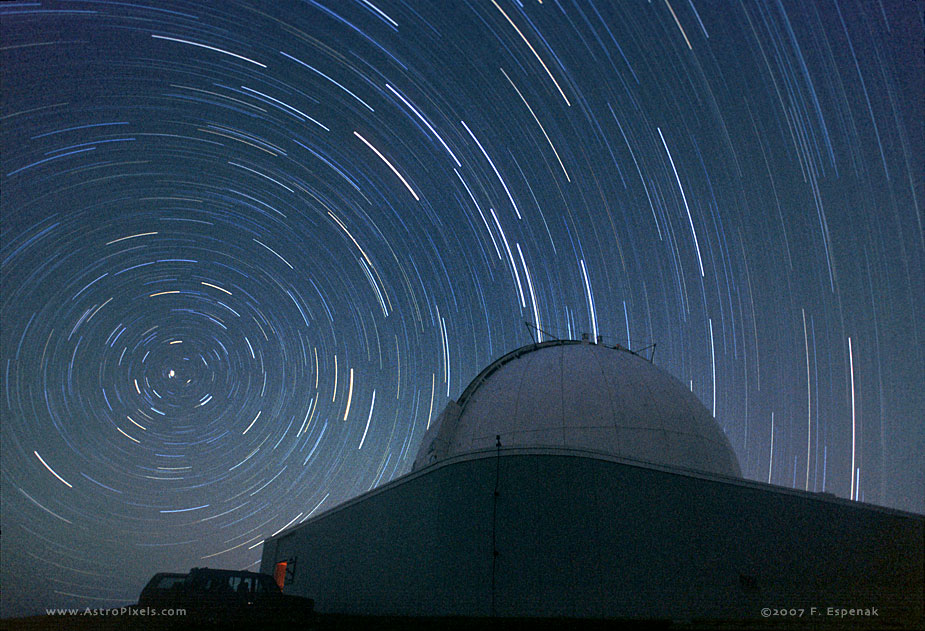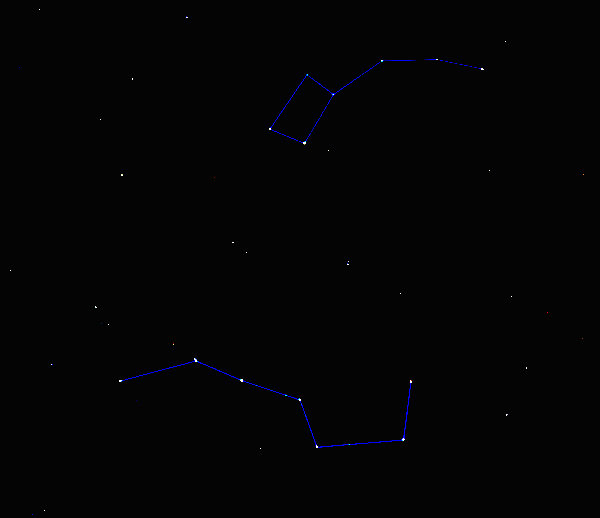Purpose:
This lab is intended to get us noticing and thinking about how the stars move in the sky as a result of the rotation of the earth and out path around the sun. Historically being able to tell time at night was useful in the same way that watching the sun progress across the sky was useful during the day. The nocturnal is an ancient 'analog calculator' that was in widespread use until mechanical clocks had become reliable in the 19th century.
Background:
Because the core of this lab is the actual construction of the a nocturnal it seems like it might be helpful to provide a little background. The Wiki page for the nocturnal is a good place to start. There are basically three parts to a nocturnal. The largest disk sets the date of the observation. This is necessary since the relative location of the stars in the sky varies throughout the year. The smaller disk mounted on top of the larger one is essentially the clock face and also selects which constellation we will use to determine the time. This tells us what time it is. The time that is being displayed is our local siderial/solar time which is not quite the same as our clock time. Can you explain why? Finally there is a reference arm which is used to mark the location of the stars used to track the time and indicate on the clock face what that time is. All in all it's a remarkable device. I even found a company that makes modern bronze nocturnals for the geocaching community.
Procedure:
Since this is a construction project the procedure begins with a just the process of cutting out and assembling a simple nocturnal. Here is a link to the pdf file I created and printed out on light card stock for this lab. I provide it here in case you every want to make another one or perhaps an engraved brass one for yourself:) My thanks to Dennis Fischer and his book - Latitude Hooks and Azimuth RIngs for the underlying graphics..
- The first step is clearly to cut out the different parts. You only need to cut around the outside of each shape. Cut a couple of small circles out of the material.
- Then you need to create a hole in the middle of each part. We will be installing a grommet through this hole. On most of the parts there is a clear indication of where the center is. We have some leather punches that are pretty much the right size that we can use by hand to make the holes. If you're doing this at home you could also use an exacto knife or careful work with scizzors.
- Once all the parts have a hole in the center we need to stack them up in order. On the bottom is a small circle for structure. Then next part is the large disk that does not have the dates on it -- this goes face down. On top of that is the large disk with the dates that is face up. Then the smaller disk with the times and constellations followed by the pointer arm and a final small circle for structure.
- Here's an image for the front and the back before you set the grommet.
| Front | Back |
- A grommet is inserted through the hole and secured with a cap. Be careful not to set the grommet too tight since all the parts need to move relative to each other. To accomplish this keep checking to see that the parts can rotate relative to each other. Snug is OK but tight will frustrate you.
- Read through the discussion that describes how to use the nocturnal on the geocoin site linked above. We will project the images below on the screen to practice using our nocturnals. Along the way we will talk a little about the circumpolar stars as well as the constellations that help us find the pole star (Polaris).

Here are the constellations that you would see if you were looking north at night (which way is north?). When I assume this sky is in mid October I get a time of 9:00 at night. If you don't then go back to the instructions and figure out what happened.

- Further explorations: I hope that the weather will cooperate and you will have a chance to test your nocturnal out some night soon and see how the time you determine relates to the time on your modern timekeeping device.
LAB DELIVERABLES:
I) If you successfully complete your nocturnal in class and can determine the time indicated by the images above there is no other written requirement for this lab.
